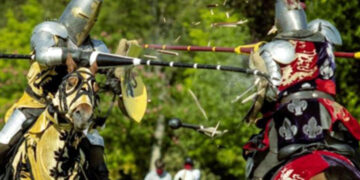WOKINGHAM resident Brian Moffatt shares a photo he took near to the site of Wokingham’s distribution road.
“I saw a barn owl near Ludgrove school, last week,” he said.
“They’re not normally seen late morning, nor in bright sunshine, as they prefer to hunt at dusk and dawn.
“So it was probably disturbed from its roost by the southern distribution road development.

“It was perched on a post and while I took a photo it flew towards me.
” I was lucky enough to be able to catch it in flight.”
Unlike tawny owls, which prefer woodland, barn owls roost near farmland where they can hunt over open fields.
As their name suggests, they used to be found in dry, high up places within old barns, which also gave them wide flat spaces on which to lay their eggs.
Most modern farm buildings are not suitable for roosting, so barn owls are forced to seek out old buildings and church roofs, roost within hay bales, or even adopt holes in trees if they’re big enough.
Apart from a loss of roosting and nesting sites, their greatest threat, however, is from main roads.
The Barn Owl Trust says many die on major routes and motorways.
Without hedges on either side to deter them, barn owls can swoop very low to the ground on major roads, attracted by grass verges that may be hiding prey, only to be hit by vehicles at speed.
Might the builders of the new southern distribution road consider planting hedges either side, to try to prevent this happening in Wokingham?
For information, visit: barnowltrust.org.uk












































